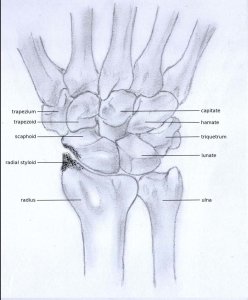 Arthritis joint pain is a ubiquitous problem. In many people, especially those middle-aged individuals, diagnostic testing will reveal the presence of osteoarthritis (OA) – more commonly known as simply “arthritis” – as the primary cause of the joint pain. Up to 85% older than 65 years of age, have x-ray evidence of osteoarthritis. Autopsy studies suggest the presence of osteoarthritis in weight-bearing joints in almost all people by the age of 45 years old.
Arthritis joint pain is a ubiquitous problem. In many people, especially those middle-aged individuals, diagnostic testing will reveal the presence of osteoarthritis (OA) – more commonly known as simply “arthritis” – as the primary cause of the joint pain. Up to 85% older than 65 years of age, have x-ray evidence of osteoarthritis. Autopsy studies suggest the presence of osteoarthritis in weight-bearing joints in almost all people by the age of 45 years old.
Osteoarthritis vs Rheumatoid Arthritis
As opposed to rheumatoid arthritis, the traditional belief has been that osteoarthritis is non-inflammatory. However, although controversial, some scientists now believe that inflammation is involved in OA.
In the end, OA or “degenerative joint disease” results in bone spurs (osteophytes) and cartilage injury and degradation.
Osteoarthritis – Knee, Hand & Hip Joints
The most commonly involved joints are the knee, hand, and hip. There is a genetic component to the development of osteoarthritis. In people older than 50 years of age, women are more likely than men to develop OA, especially of the knee and hip. The older patient is more likely to develop OA. Asians are at lower risk for developing OA. Other contributing factors to OA may include estrogen deficiency, subclinical levels of certain vitamins (C, E, D, K) and inflammatory conditions such as metabolic syndrome.
Diagnosis
The diagnosis of OA can generally be made with a detailed medical history, physical examination, and x-ray evaluation. In certain instances, more sophisticated imaging (MRI or CT scan) and laboratory testing may be indicated. Once a diagnosis of osteoarthritis is made, an appropriate treatment plan can be undertaken.
If you live in, or you are visiting the general Lehigh Valley region, including Allentown, Bethlehem and Easton areas, and you are suffering from joint pain, make an appointment by calling (610) 954-9400 or schedule a doctor’s visit Online.
We are committed to improving your life without a knife.
Bibliography:
- Neudstadt DH. Osteoarthritis. In: Bope ET, Kellerman RD, eds. Conn’s Current Therapy. Philadelphia, PA: Elsevier-Saunders; 2015: 619-624.
- Mandell BF, Lipani J. Refractory osteoarthritis: differential diagnosis and therapy. Rheum Dis Clin North Am. 1995; 21(1): 163-178.
- Hellman DB, Imboden JB. Rheumatologic and immunologic disorders and treatment. In: Papadakis MA, McPhee SJ, Rabow MW, eds. CURRENT Medical Diagnosis & Treatment. New York, NY; McGraw Hill Education; 2015: 808-811.
- Salamon L., Morovic-Vergles J, Marasovic-Krstulovic D, et al. Differences in the prevalence and characteristics of metabolic syndrome in rheumatoid arthritis and osteoarthritis: a multicentric study. Rheumatol Int. 2015 Jun 10.
- Felson DT, Zhang Y. An update on the epidemiology of knee and hip osteoarthritis with a view to prevention. Arthritis Rheum. 1998; 41 (8): 1343-1355.
- Felson DT. Risk Factors for osteoarthritis: understanding joint vulnerability. Clin Orthoped Rel Res. 2004; (427 suppl): s16-s21.
- Srikanth VK, Fryer JL, Zhai G, Winzenberg TM, Hosmer D, Jones G. A meta-analysis of sex difference prevalence, Incidence and severity of osteoarthritis. Osteoarthritis Cartilage. 2005; 13 (9): 769-781.
- Oliveria SA, Felson DT, Reed JL, et al. Incidence of symptomatic hand, hip, and knee osteoarthritis among patients in a health maintenance organization. Arthritis Rheum. 1995; 38 (8): 1134-1141.

